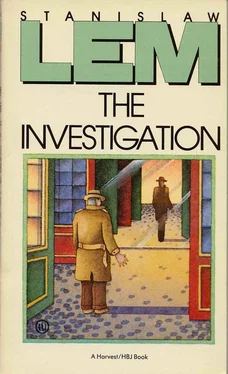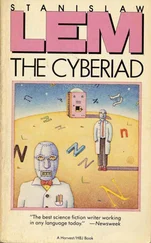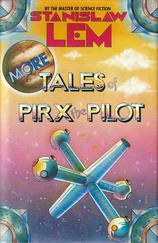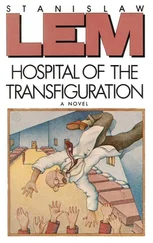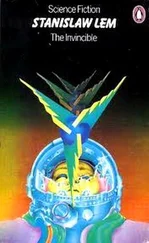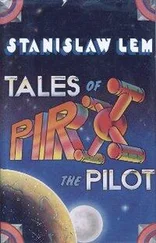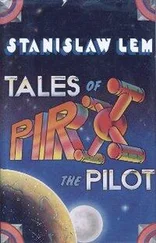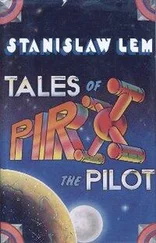“In what thing?”
“I’m not sure.”
“Really?”
The Chief Inspector sounded almost cheerful. Gregory wished he could see his face. This was a completely different Sheppard from the one he’d occasionally met at the Yard.
“In my opinion this is a lousy case,” Gregory suddenly blurted out as if talking to a friend. “There’s something about it… something peculiar. It’s not that it’s difficult, but there are details that don’t fit… not for material reasons but because the only connecting links are all psychological nonsense. It all builds up to nothing and leads to a dead end…”
“Yes, go on,” Sheppard chimed in attentively, still pacing back and forth. Gregory was no longer watching him. Unable to tear his eyes from the papers on the desk, he began speaking excitedly.
“The idea that this whole case is based on some kind of insanity, mania, or psychopathology is almost irresistible. No matter where you start, no matter how anxious you are to avoid it, everything leads you back to it. But as a matter of fact that’s our out, because it only seems that way. All right, let’s say it was a maniac. But everything was so carefully planned and methodical… I don’t know, do you see what I mean? If you went into a house and found that all the tables and chairs had only one leg, you’d probably tell yourself that it was the work of a madman, that some maniac had decided to furnish his house that way. But if you went from house to house and found the same thing all over town? I don’t know what any of this means, but it just couldn’t be… this is not the work of a madman. I think we have to go to the other extreme. Someone very intelligent who is using his intellect for a purpose we don’t understand yet.”
“What else?” Sheppard asked quietly, as if he didn’t want to do anything to intrude on the fervor which had quite obviously seized Gregory. Sitting behind the desk, still staring blindly at the papers, the younger man was silent for a moment, then answered.
“What else?… Nothing very good. Nothing very good at all. A series of acts without a single slipup, that’s pretty bad… In fact it appalls me, it’s absolutely inhuman. Human beings don’t work that way. Human beings make mistakes, it’s in the nature of things that they miscalculate from time to time, make mistakes, leave clues behind, change their plans in the middle of everything. But from the very beginning these bodies… the ones that were moved… if that’s the right word for it… I don’t agree with Farquart that the perpetrator ran away because he was frightened. It wasn’t anything like that. At the time all he wanted was to move them. Just a little at first. Then a little more. Then, still more… until finally a body disappeared altogether. That’s the way it had to be, that’s the way he wanted to do it. I thought… I’m always thinking about it, why he… but I don’t know. Nothing.”
“Are you familiar with the Lapeyrot case?” Sheppard asked. Standing in the back of the room he was almost invisible.
“Lapeyrot? The Frenchman who—”
“Yes. In 1909. Do you know the case?”
“It sounds familiar, but I can’t remember. What was it about?”
“About too much evidence. At least that’s what they said at the time, unfortunately. On a beach along the Seine River, for a certain period, they kept finding buttons of various kinds arranged in geometric patterns, as well as belt buckles, suspender clasps, and small coins. Always arranged in polygons, circles, or other shapes. There were also handkerchiefs knotted together.”
“Wait a minute. I remember something now. I must have read about it somewhere. Two old guys in a garret who… right?”
“Right. That’s the very case I’m talking about…”
“They used to search out young people who were trying to kill themselves — they’d bring them home, revive them, cheer them up, and have them tell what it was that had driven them to attempt suicide. That’s the way it was, right? And after all that… they strangled them to death. Right?”
“More or less. One of the pair was a pharmacist. After the murders they got rid of their victims with the aid of some acid and a fireplace; then they’d amuse themselves by playing a little game with the police with the buttons, buckles, coins, and other odds and ends that were left over.”
“I don’t see the connection. One of the Lapeyrot murderers was insane. He completely dominated his accomplice, who was regarded as a victim of folie à deux. The two of them devoted most of their energy to the button puzzles because that’s what really excited them. The case may have been hard to crack, but basically it was quite commonplace: there were murderers and victims, there were clues. What difference does it make if the crime was committed with a few theatrical flourishes—”
Gregory stopped short, an incomprehensible smile suddenly appearing on his lips. He looked at the Chief Inspector, trying to get a glimpse of him in the dim light.
“Wait, I think I see…” he said, his tone indicating that he had just made a startling discovery. “So that’s it.”
“Yes, that’s it exactly,” Sheppard answered, resuming his pacing.
Gregory bowed his head, tapping on the edge of the desk with his fingers.
“Theatrical,” he whispered. “An imitation… but an imitation of what?” he said, raising his voice. “A sham, but to cover what? Insanity? No, it can’t be anything like that. The circle is closing again.”
“It’s closing because you’re going in the wrong direction. When you talk about shammed insanity you’re looking for a close analogy to the Lapeyrot case, in which the murderers, if I may put it this way, had a particular audience in mind all along: they purposely left clues to give the police a puzzle to solve. In our case there’s nothing to indicate that any of this is aimed at the police. In fact, I doubt it very much.”
“Yes, well in that…” said Gregory. He felt downhearted and stifled. “So we’re back where we started. The motive.”
“No, not at all. Look over here, please.”
Sheppard pointed to the wall, at a small circle of light that Gregory hadn’t noticed before. Where was it coming from, he wondered. Glancing at the desk, he saw a cut-glass paperweight standing next to the reflector of the desk lamp; a narrow beam of light, refracted in its crystalline depths, was escaping into the room’s dark interior to shine on the wall.
“What do you see here?” asked Sheppard, moving to the side.
Gregory leaned over to escape the lamp’s blinding glare. There was a picture hanging on the wall, almost invisible in the darkness expept for one of its corners, which was lit by the single beam of light. Within this tiny space, not much larger than two coins placed side by side, he saw a dark spot enclosed by a pale gray, slightly curved border.
“That spot?” he asked. “A profile of some kind? No, I can’t make it out… wait a minute…”
Intrigued by the shape, Gregory studied it more and more carefully, his eyes squinting. The more he studied it the more anxious he became. Although he hadn’t the slightest idea what he was looking at, his anxiety began to increase.
“It looks as if it’s alive…” he said involuntarily in a low voice. “Is it a burned-out window in a gutted house?”
Sheppard moved closer to the wall and blocked the area with his body. The irregular spot of light now shined on his chest.
“You can’t figure it out because all you can see is a tiny part of the whole,” he said, “right?”
“So that’s it! You think these disappearing body incidents are only a part — let’s say the beginning — of something bigger.”
“That’s it exactly.”
Читать дальше
